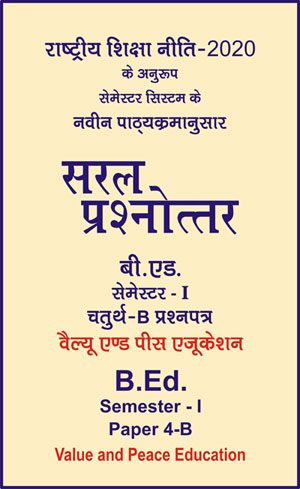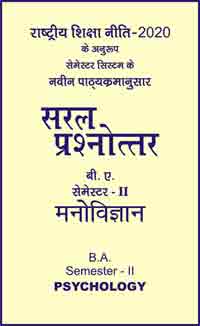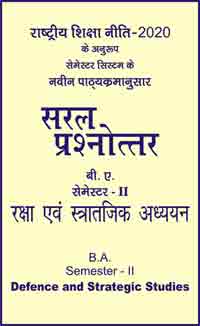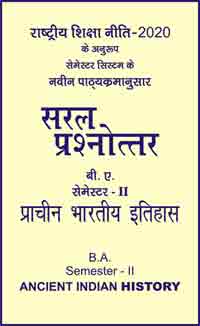|
बी एड - एम एड >> बी.एड. सेमेस्टर-1 प्रश्नपत्र-IV-B - वैल्यू एण्ड पीस एजुकेशन बी.एड. सेमेस्टर-1 प्रश्नपत्र-IV-B - वैल्यू एण्ड पीस एजुकेशनसरल प्रश्नोत्तर समूह
|
5 पाठक हैं |
||||||
बी.एड. सेमेस्टर-1 प्रश्नपत्र-IV-B - वैल्यू एण्ड पीस एजुकेशन (अंग्रेजी भाषा में)
Question- Explain the concept of Value Education in India.
Answer -
In the history of VE we see rather a slow development of the system in India. In the 1980s, the government was more responsive to the needs of VE in our schools.
-
Ancient India Value Education in India from the ancient times has held a prime place of importance. From the gurukul stage the child not only learnt skills of reading and archery but more the philosophy of life in relation with its impermanence. Hence education in India was born of this vision to achieve one’s experience in the absolute as a spark of the divine and in this process practice of one’s duty accompanies the acquisition of knowledge.
-
In the modern school system value education, was termed moral education or moral science.
-
British were absolutely neutral in their policy towards religion and value education.
-
CABE (1943-46) emphasized spiritual land moral education. It was the responsibility of home and community.
-
Committee on Emotional Integration (1961) pointed out that the science students should have at least some background of humanities; it opined that there should be a compulsory paper on India’s cultural heritage.
-
Education Commission (1964-66) recommended moral, social and spiritual values at all levels.
-
UNESCO (1972) felt that the education system should promote values of world peace and international understanding and unity of mankind.
-
National Policy on Education (NPE 1986) proposed readjustments in curriculum to make education a forceful tool to inculcate social and moral values; to eliminate obscurantism, fanaticism, superstition, illiteracy and fatalism.
The National Policy on Education (NPE), 1986 envisages a national system of education based on a National Curricular Framework containing a common core along with other components that are flexible.
The common core includes the history of India’s freedom movement, the constitutional obligations and other content essential to nurture national identity.
These elements will cut across subject areas and will be designed to promote values such as India’s common cultural heritage, etiquette, egalitarianism, democracy and secularism, equality of the sexes, protection of the environment, removal of social barriers, observance of the small family norm and inculcation of the scientific temper.
|
|||||













